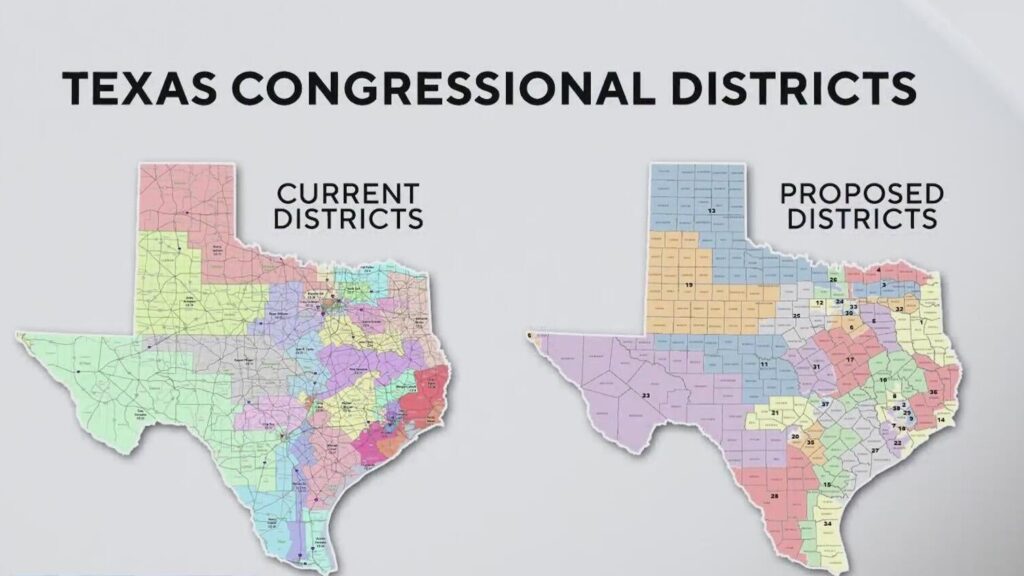Texas House Panel Moves Forward with Redistricting Plan Favoring Republicans
A Texas House redistricting committee has officially endorsed a new congressional map that aims to create five additional districts likely to favor Republican candidates. This decision, which came during a session on Saturday, followed extensive public testimony and objections primarily from Democratic lawmakers who argue that the proposed changes would disenfranchise voters of color.
The vote passed along party lines, with a tally of 12 in favor and 6 opposed. The committee’s approval signals that it may soon be presented to the broader House for further consideration, potentially as soon as next week.
The Republican Agenda Behind the Map
Republican representatives revealed their intent to redraw the electoral landscape of Texas, explicitly prioritizing political advantage over other considerations. Representative Todd Hunter, who sponsored the bill, admitted, “Different from everyone else, I’m telling you, I’m not beating around the bush. We have five new districts, and these five new districts are based on political performance.”
Motivated by pressure from former President Donald Trump’s advisors, Texas Republicans contend that the new map is essential for preserving their slim majority in Congress as the midterm elections approach.
Proposed Changes to the Districts
The redistricting committee’s proposal introduces significant changes, especially in key urban areas such as Houston, Austin, and Dallas. The new map designates five districts that have shown a strong tendency to vote Republican, with the expectation that these districts will have supported Trump by a margin of at least 10% in the last election. In the 2024 elections, Trump secured 56.2% of the votes in Texas. While current lines favor Republicans with 66% of the state’s 38 House seats, the new map aims to increase this share to 79%.
Concerns Over Racial Gerrymandering
Despite claims by Republicans that their goal is not to engage in racial gerrymandering, critics argue otherwise. The proposed map, they say, would concentrate voters of color into fewer districts, thereby limiting their influence in elections. Congressman Jasmine Crockett of Dallas expressed concern over this trend, stating, “Every citizen should have equal access to choose their representation, instead of crowding Black people to the point that all the Black people in the state only have two representatives.”
While the design includes one new majority Hispanic district and two majority Black districts, Democrats assert that these changes fail to ensure adequate representation for these communities.
Legal Ramifications and Political Maneuvering
Legal challenges to the proposed map could stretch for months, especially as ongoing litigation regarding previous map changes continues. Current maps, implemented in 2021, are still under examination for potential violations of the Voting Rights Act.
Facing limited options to counter the advancement of the Republican-sponsored map, Democrats in Texas could consider more drastic measures, such as leaving the state to deny a quorum for a vote. Such a move, however, poses its own challenges.
Public Response
During the public comment portion of the hearing, which represents the last opportunity for public input on the matter, Democratic lawmakers urged their Republican counterparts to reconsider the redistricting process entirely. Congressman Lloyd Doggett remarked, “This is not a Texas map. It is a Trump map, imposed by President Trump, who has a stranglehold on Congress.”
Overview of Proposed Changes
| District Type | Current Count | Proposed Count |
|---|---|---|
| Majority White Districts | 22 | 24 |
| Majority Hispanic Districts | N/A | 1 |
| Majority Black Districts | N/A | 2 |
As the situation unfolds, it remains to be seen how the proposed map will impact Texas politics and voter representation in the years to come.

